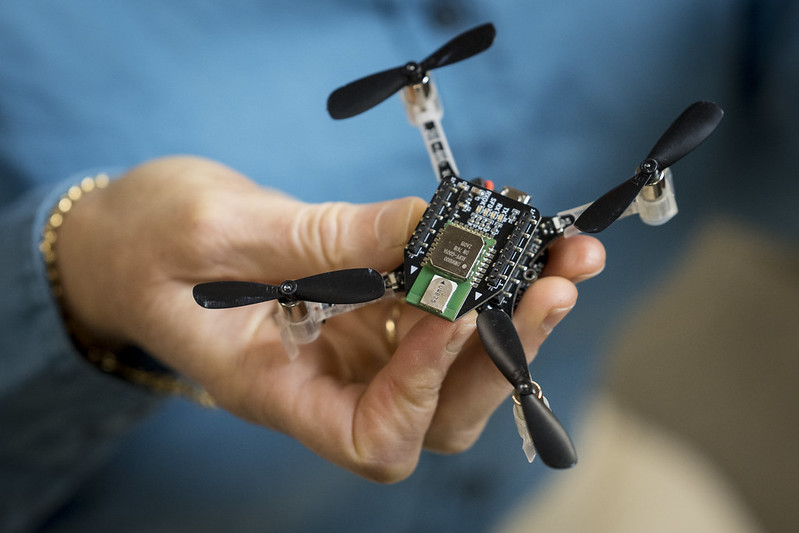
Want to pilot swarms of 100 drones or more all at once? Well, you can’t – not yet, at least, but an Oregon State University project has brought that possibility closer to near-term reality.
Researchers at Oregon State University’s College of Engineering tested their Offensive Swarm-Enabled Tactics (Offset) drone project in partnership with the US military’s Defense Advanced Research Projects Agency. The objective, says team leader Julie A. Adams, was not to create a system that will permit any pilot to fly a massive drone swarm on their own. Instead, it deployed tech allowing a single operator to oversee 100 UAVs or more in order to test their physical and psychological capacities in handling that outsize multi-tasking effort.
“The commanders weren’t physically driving each individual vehicle, because if you’re deploying that many vehicles… a single human can’t do that,” Adams said. “The idea is that the swarm commander can select a play to be executed and can make minor adjustments to it, like a quarterback would in the NFL. The objective data from the trained swarm commanders demonstrated that a single human can deploy these systems in built environments, which has very broad implications beyond this project.”
The Oregon State experts worked with tech firm Smart Information Flow to create a virtual reality interface called I3, which allowed each OFFSET project commander to QB their swarm of both aerial and ground drones – in some cases up to 250 at once. Organizers procured and adapted off-the-shelf equipment to develop the interface necessary for one person to oversee that many craft.
During operation, pilot workload levels were assessed using physiological sensors feeding response data into an algorithm tracking fluctuations in estimated response to workloads, and comparing those to maximum capacities measured beforehand. It turns out most operators wound up handling the task of overseeing that many drones at the same time just fine.
“The swarm commanders’ workload estimate did cross the overload threshold frequently, but just for a few minutes at a time,” Adams said. “(T)he commander was able to successfully complete the missions, often under challenging temperature and wind conditions.”
The trials were conducted over a four-year period at the Department of Defense‘s Combined Armed Collective Training Facilities. They were held in “concrete canyons” in simulated urban settings, where line-of-sight, satellite-based communications were interrupted by surrounding structures. Those scenarios – and pilot feedback during the Oregon State-led drone project – will have obvious applications for military use in similar combat settings.
But Adams says the results will also ultimately assist faster and more effective scaling of drone swarms for commercial purposes.
“It makes business sense to deploy delivery drones at a scale, but it will require a single person be responsible for very large numbers of these drones,” Adams noted. “I’m not saying our work is a final solution that shows everything is OK, but it is the first step toward getting additional data that would facilitate that kind of a system.”
FTC: We use income earning auto affiliate links. More.



Comments